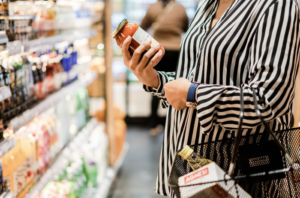Buyer churn: 50% does not equal half your sales
 FMCG brands struggle to keep more than 50% of last year’s buyers – especially if they are small and compete in rarely purchased categories. This percentage, as bad as it sounds, is not as tough in terms of sales as it is in terms of buyers lost. We looked at three buyer groups for several hundred brands in a European country and their behaviours vis-à-vis the brand in 2015 and 2016:
FMCG brands struggle to keep more than 50% of last year’s buyers – especially if they are small and compete in rarely purchased categories. This percentage, as bad as it sounds, is not as tough in terms of sales as it is in terms of buyers lost. We looked at three buyer groups for several hundred brands in a European country and their behaviours vis-à-vis the brand in 2015 and 2016:
- Consumers who purchase the brand in 2 subsequent years (retained)
- Consumers who purchase the brand in year 1 but not in year 2 (lost)
- Consumers who do not purchase the brand in year 1 but in year 2 (new)
Our findings show that, for the average brand, new buyers shop as often as lost buyers – but only half as often as retained buyers. This means that on average the buyers a brand will lose are responsible for only 1/3 of sales – and the buyers a brand gains on average will make up these lost sales.
This ratio is true irrespective of brand size and category purchase frequency. What makes a small difference is category type: New buyers shop a bit less frequently for the average brand in household and personal care than lost buyers did. Maybe such categories pose more risk and households are more reluctant to quickly add these brands to their repertoires.
We advise brand management to track not only the percentage of new and lost buyers, but also their frequency relative to existing buyers. Deviations from the above norms can highlight specific causes for growth or decline – if new buyers for example buy less often than lost ones – and trigger corrective actions.



















































































































































































































































































































































































































































